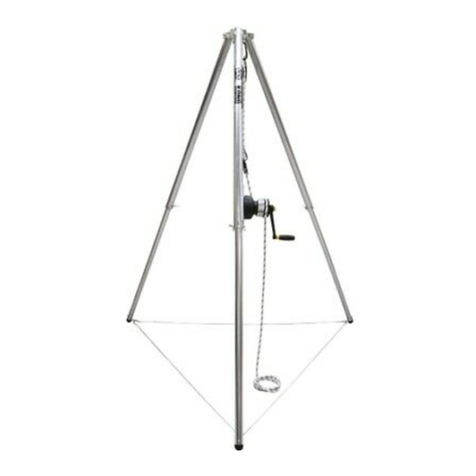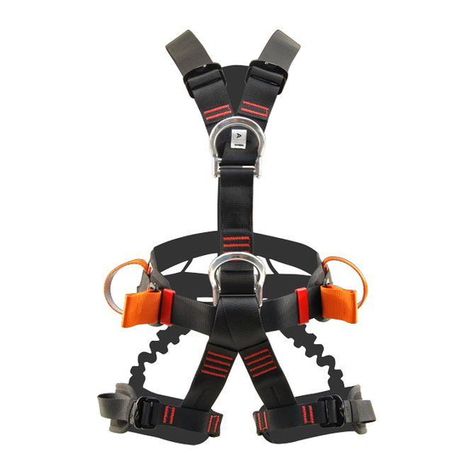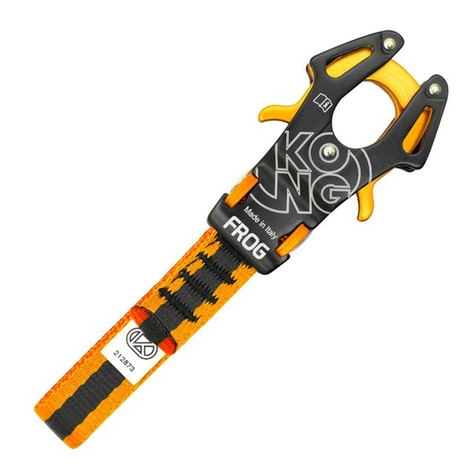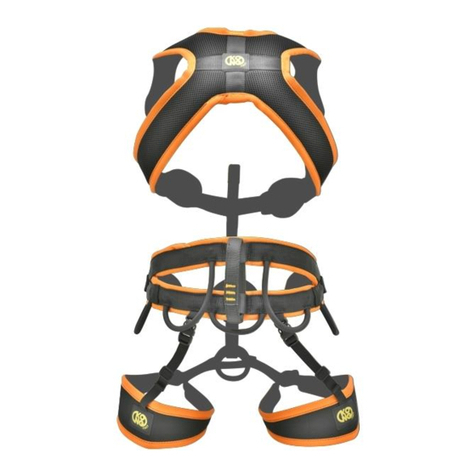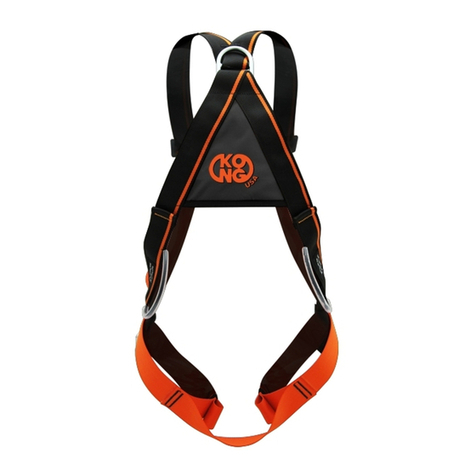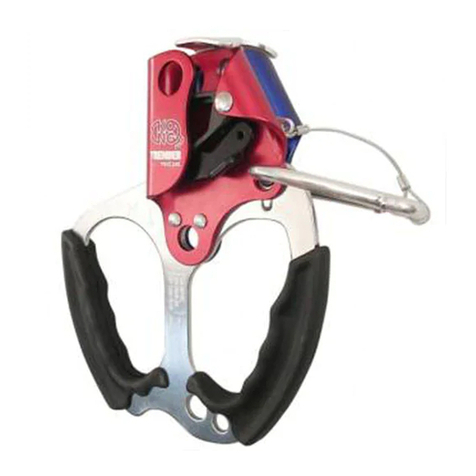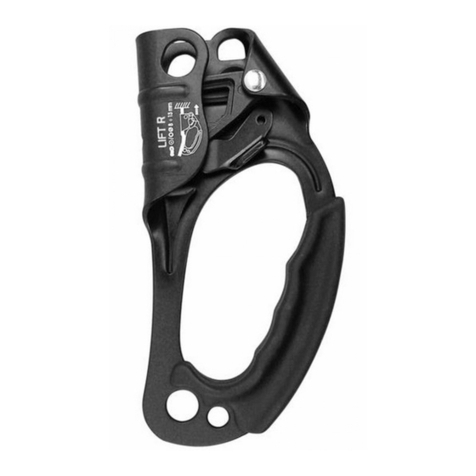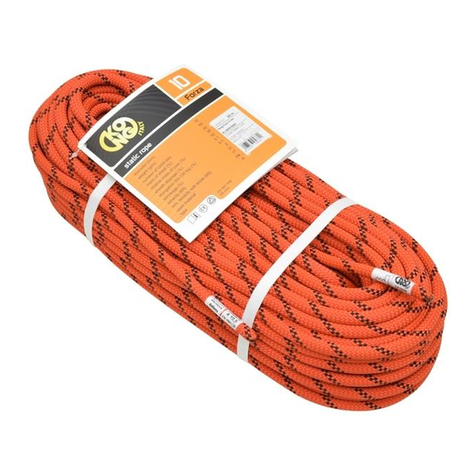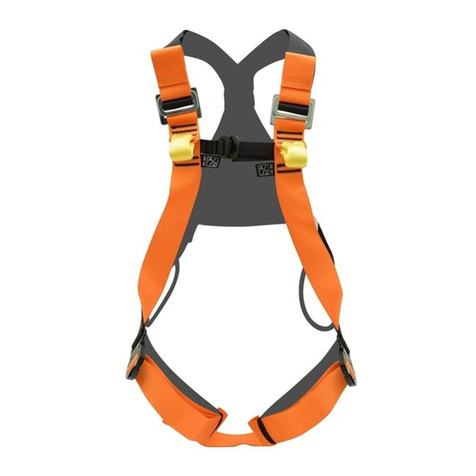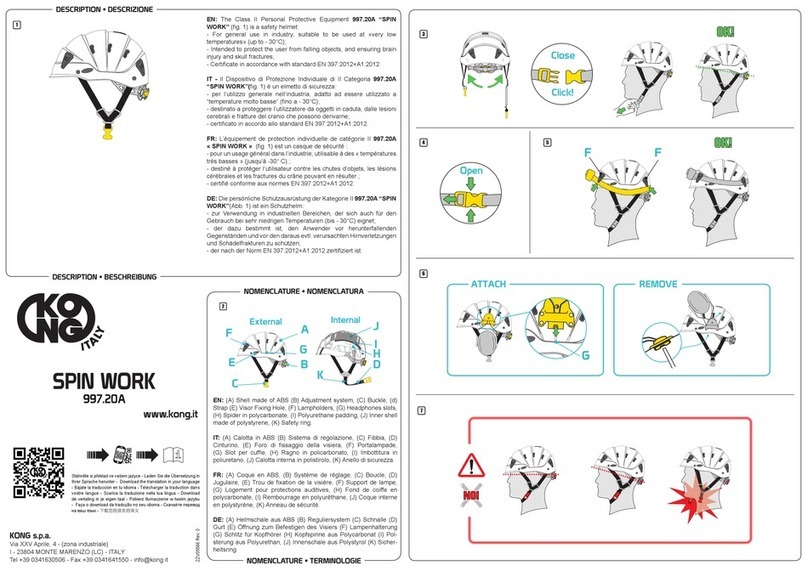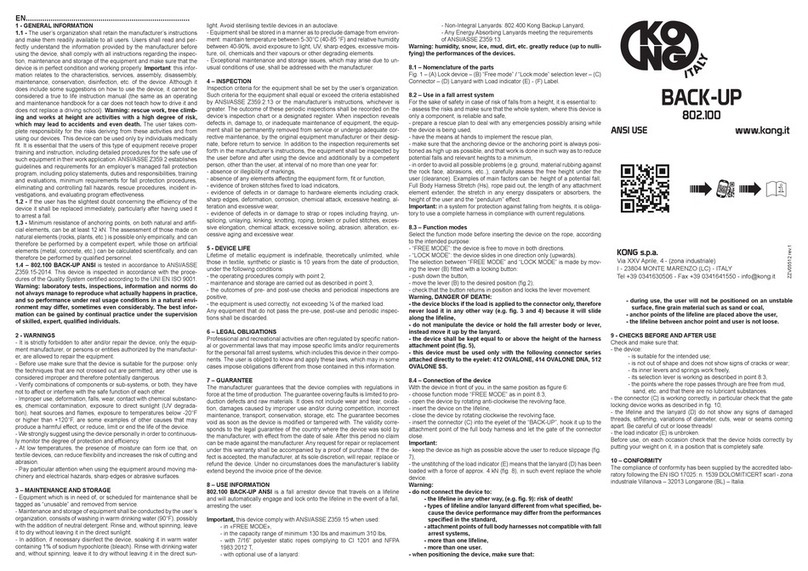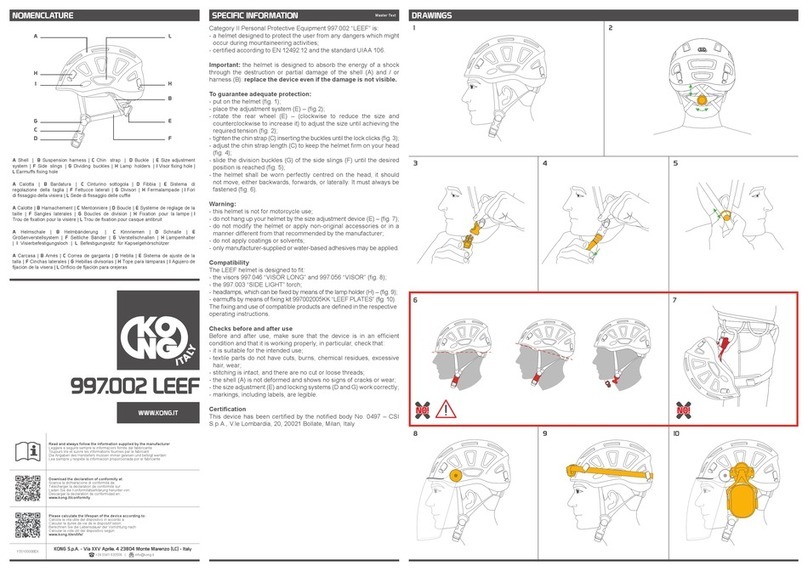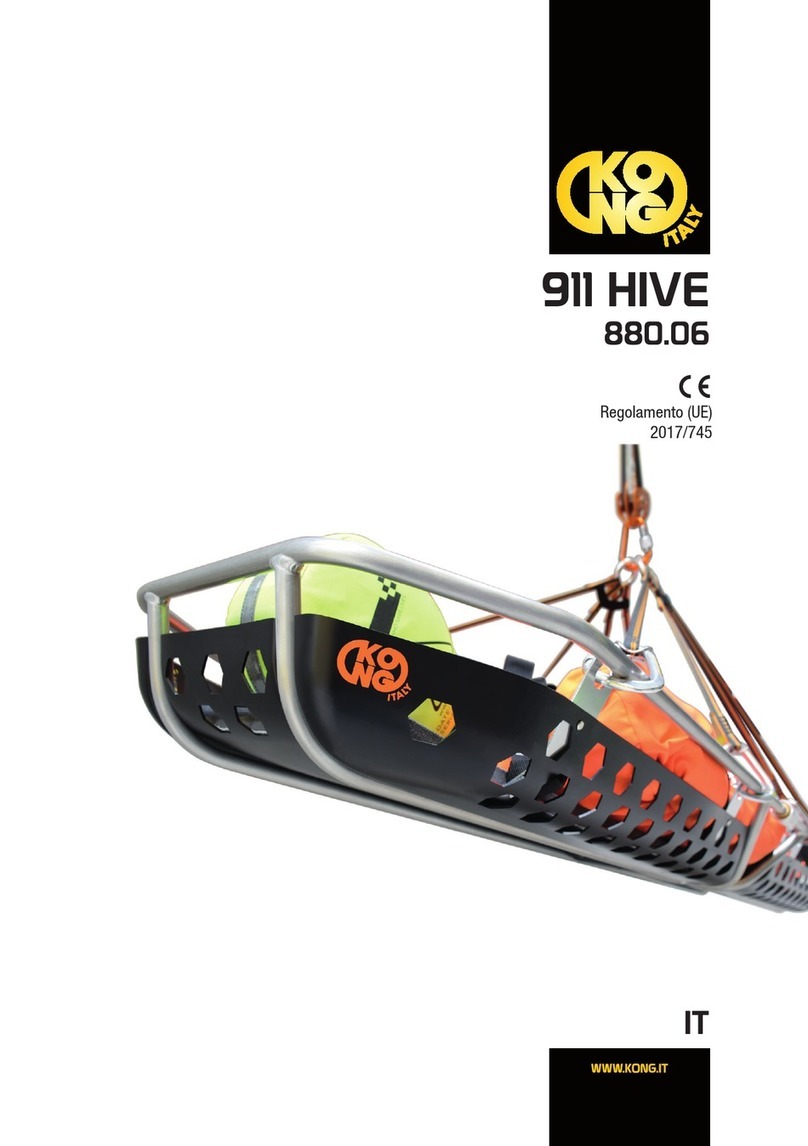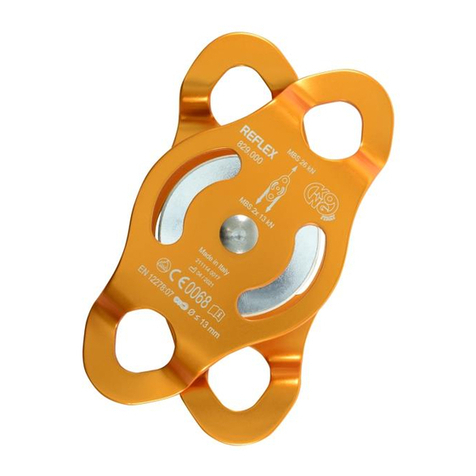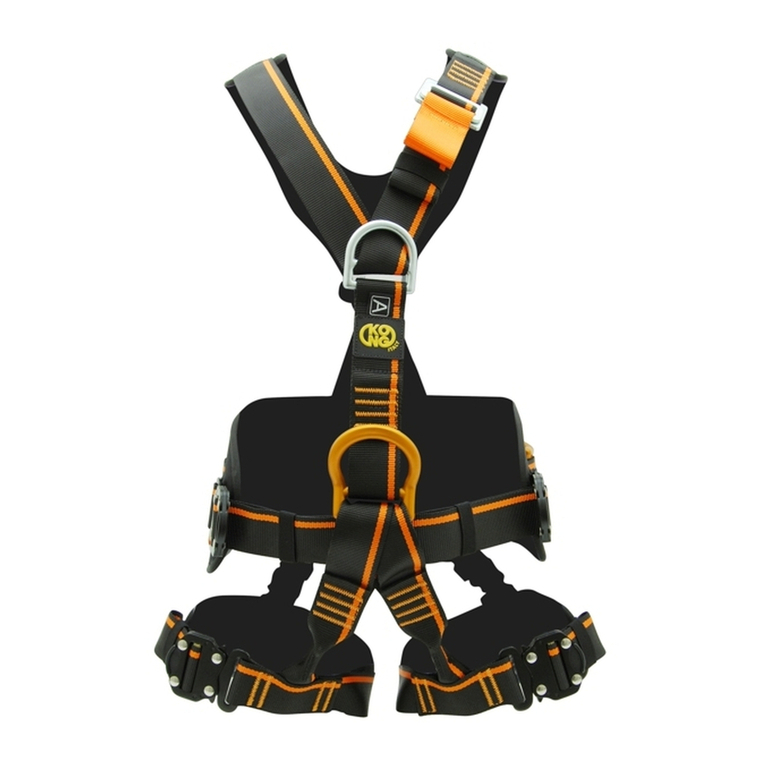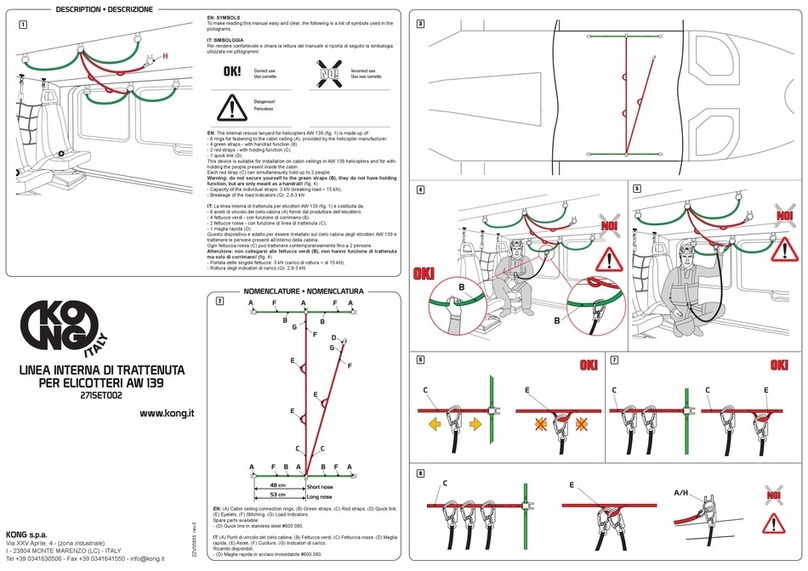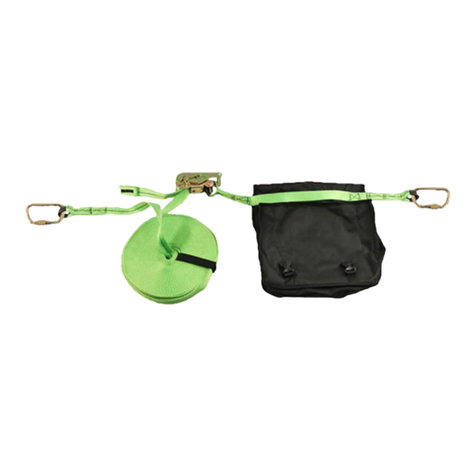
CS
1 - ZÁKLADNÍ INFORMACE
A) Informace dodané výrobcem (dále pouze „informace“) si
uživatel musí přečíst a řádně je pochopit ještě před použitím
zařízení. Upozornění: Přestože informace týkající se popisu
vlastností zařízení, jeho výkonnosti, montáže, demontáže,
údržby, uchovávání, dezinfekce apod. obsahují některé rady
pro použití, nesmí se nikdy v reálných situacích považovat
za návod k použití (stejně jako návod k použití a údržbě
automobilu nevysvětluje, jak řídit, a nenahrazuje autoškolu).
Upozornění: Lezení po skalách i po ledu, slaňování, lezení po
zajištěných cestách (via ferrata), speleologie, skialpinismus,
canyoning, průzkum, záchranářství, stromolezectví a
výškové práce – to vše jsou činnosti s vysokým stupněm
rizika, při kterých může dojít i ke smrtelným úrazům. Uživatel
přijímá všechna rizika pocházející z provozování těchto
činností a z použití našeho zařízení.
Toto zařízení musí používat pouze osoby fyzicky vhodné
a vyškolené (informované a zacvičené) ohledně používání
nebo osoby, které jsou pod přímou kontrolou školitelů/
dozoru, kteří/který ručí za jejich bezpečnost.
B) Před použitím a po použití musí uživatel provést
všechny kontroly popsané ve specických informacích a
zejména se ujistit, že zařízení:
- je v optimálním stavu a funguje správně,
- je vhodné pro použití: jsou povolené pouze znázorněné
techniky, které nejsou přeškrtnuté, a jakékoli jiné použití
není ve shodě, a proto je potenciálně nebezpečné.
C) Když má uživatel minimální pochybnosti o účinnosti
zařízení, musí jej okamžitě vyměnit, zejména po jeho
použití pro zastavení pádu. Nevyhovující použití,
deformace, pády, opotřebení, chemická kontaminace,
vystavení teplotám nižším než -30 °C nebo vyšším než
+50 °C u textilních/plastových komponentů/zařízení a +100
°C u kovových zařízení představuje některé z příkladů,
které mohou snížit, omezit a ukončit životnost zařízení.
Výrazně se doporučuje osobní používání zařízení z důvodu
nepřetržitého monitorování stupně ochrany a účinnosti.
D) Toto zařízení se smí používat spolu s OOP, které
vyhovují Směrnici 89/686/EHS a jsou kompatibilní s
příslušnými informacemi od výrobce.
E) Poloha ukotvení je nezbytným předpokladem pro
bezpečnost zastavení pádu: pozorně zhodnoťte volnou
výšku pod uživatelem, výšku možného pádu, prodloužení
lana z přírodních/syntetických materiálů / kovového lana,
prodloužení případného pohlcovače/rozptylovače energie,
postavu uživatele a „kyvadlový“ efekt, abyste se vyhnuli
všem možným překážkám (např. terén, oděr materiálu o
skálu apod.).
F) Minimální odolnost kotvicích bodů, vytvořených na
přírodních i umělých prvcích, musí mít hodnotu 12 kN.
Vyhodnocení již realizovaných kotvicích bodů na přírodních
prvcích (skála, rostliny apod.) je možné pouze empirickým
způsobem, a proto musí být provedeno kompetentním












